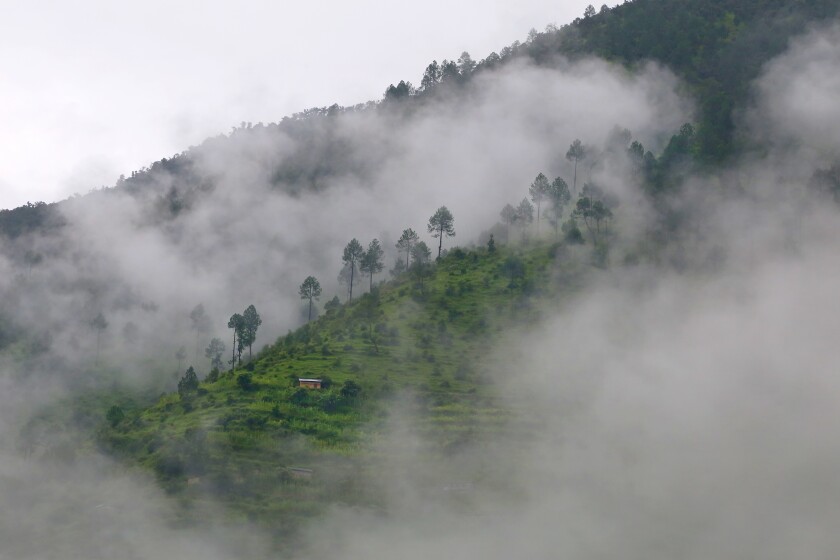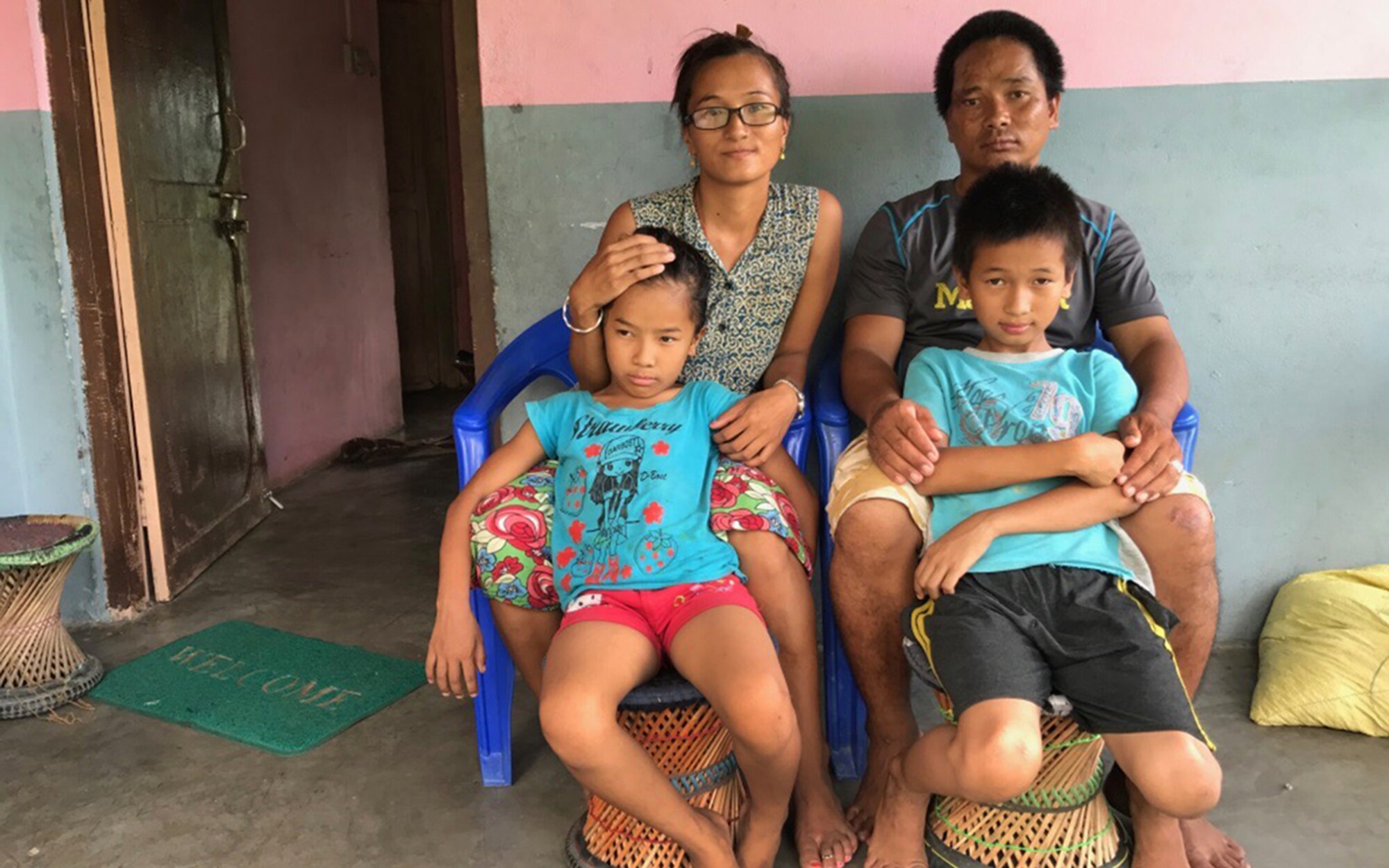
Santoshi Tamang’s nightmares repeat.Someone brings her deep into the tangled woods outside her small town in southeastern Nepal and leaves her there, alone.Then she sees the pyre where the body is burning. The body reaches for her, pulling her into the flames.
It is the body she burned in these same woods — the body shipped home after her husband, a migrant worker named Subash, was declared dead in Saudi Arabia more than five years ago.
Santoshi remembers only flashes of the funeral she saw between blackouts.The body, wrapped in a white shroud. The line of Buddhist monks, neighbors and relatives, slowly carrying the body into the woods. Her young daughter and son, trailing behind.
They believed that setting the body aflame would free the soul. Instead, it now haunts two families, forever connected by the macabre events that began unfolding in a desert 4,000 miles away.
Santoshi said she always held on to the hope that somehow Subash would come back to life.“But then I’d remind myself — I watched his body burn,” she said. “It’s not something that could happen.”Until it did.
On July 9, 2015, 33-year-old Subash Tamang and three Nepali co-workers hired a taxi outside the power plant where they lived and worked on the outskirts of Jidda, Saudi Arabia’s largest port city.
All four worked for Hyundai Heavy Industries, the Korean shipbuilding and construction behemoth (a separate company from the car manufacturer) that built the Jidda South Thermal Power Plant. From miles away, the plant’s smokestacks stick out like lit cigarettes against the aquamarine Red Sea.
Under Saudi Arabia’s system of kafala, or sponsorship, the legal status of migrant workers is tethered to employers. Rights groups, labor experts and international organizations call the system abusive and exploitative — the United Nations said it “facilitates contemporary forms of slavery.”
“Kafala is incompatible with international law,” said Felipe González Morales, the United Nations special rapporteur for migrants.
In practice, Saudi labor law means that sponsors control most aspects of workers’ lives. Most foreign laborers aren’t allowed to leave the camps where they work, eat and sleep — much less the country — without the permission of employers like Hyundai, and often for years at a time. This de facto indentured servitude has only been worsened by the coronavirus.
Nepal, squeezed between India and China, is a nation of 30 million that exports more workers per capita than any other country in Asia, many of them headed to the Persian Gulf. In recent years, remittances from wages earned outside Nepal have represented up to a third of its gross domestic product — the most of any country in the world.
That day in Jidda, Subash and his co-workers were headed to a money-transfer service where they sent earnings home to their families. It was a familiar ritual for the taxi driver, 25-year-old Tejendra Bhandari, another worker from Nepal.
Sepia desert and warehouses ticked by as the taxi approached a traffic circle about 20 miles from the power plant. Then the taxi slammed into a tractor-trailer, crumpling like foil. Three of the men died on impact.
Reports of twisted wreckage and body parts on the asphalt spread quickly through Jidda’s labor camps, filled with Nepali and other workers from across South Asia who make up most of Saudi Arabia’s more than 13 million foreign laborers, nearly 40% of its population.
Only Subash and Tejendra, the driver, survived the crash. Unconscious and critically injured, they were airlifted to King Abdulaziz Hospital, where one died the next day.
The dead man had yet to be officially identified when word of the crash reached the Hyundai plant and Subash’s nephew Bhupal Tamang, who worked there under the same manager as his uncle. Bhupal had meant to go with Subash to the remittance shop, but he ran late, so the group had left him behind.
Bhupal said he asked his manager for permission to go to the hospital and determine whether his uncle was among the living or the dead. Bhupal said the manager wouldn’t allow it, saying it was his job to identify Subash.
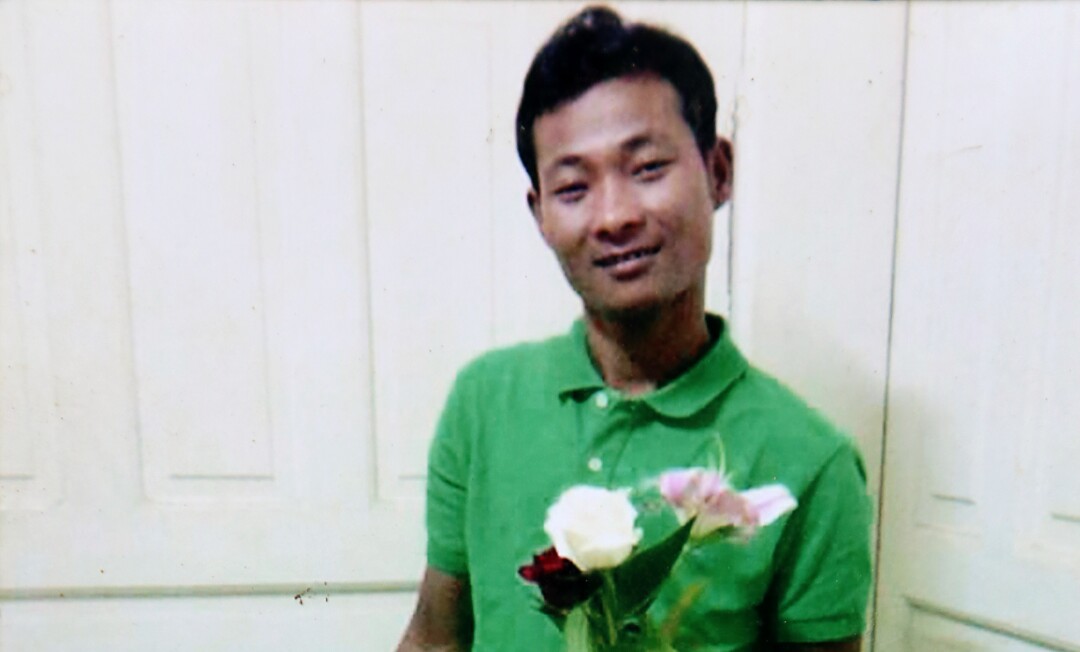
The manager went to the hospital, looked at the body and confirmed Bhupal’s fears.
It took Hyundai more than a month to send the bodies back to Nepal. Bhupal said the company wouldn’t give him leave to accompany his uncle home or to pay his last respects.
Years later in Jidda, a burned-out shell of another car was left half-buried in sand at the roadside along the route taken by Subash and Tejendra, as if in warning of dangers past and future.
I have traced Subash and Tejendra’s odyssey from Nepal to Saudi Arabia and back, initially obsessed with solving the mystery of a real-life resurrection. But behind the quest was a larger, darker truth: The kingdom’s modernization push relies on a labor pipeline from South Asia to the Persian Gulf that reduces workers to expendable, indistinguishable bodies.
The day that Hyundai had said Subash’s body would arrive home in Nepal, Santoshi waited for hours at the country’s lone international airport, just one short strip of runway before the looming foothills surrounding Kathmandu, the capital.
Every day that had passed already was an affront to Buddhist tradition, which dictates that a person be cremated as soon as possible after death.
When night fell, and the body still hadn’t come, Santoshi’s relatives had to trick her to get her to leave. They spent a fitful night in a nearby hotel room they couldn’t afford.

Workers’ cardboard coffins regularly appear at Tribhuvan International Airport in Kathmandu, among the tourists headed for the Himalayas, shipped like any other cargo. One airport official told me as many as five to 10 bodies come from the Persian Gulf and Malaysia each week.
Relatives wheel those remains past other Nepali workers waiting to board departing planes to replace them, foreign employment licenses in hand. There are so many laborers leaving Nepal every day — more than 1,000 on average for the last decade, according to the government — that they have a dedicated departure line. And despite a global economic downturn due to the coronavirus that has left thousands of Nepali laborers stranded in Persian Gulf nations, Nepal recently lifted a several-month pause on work abroad.
Often, all the men in a Nepali family go, and many women as well. Many of them take on what international watchdogs, labor advocates and researchers call predatory debts to secure a job abroad, because even if they are low-paid by global standards, they can still earn more than they can in Nepal. Hyundai paid Subash roughly $7 a day to inspect building materials at the power plant — more than three times the average of $2 a day in Nepal.
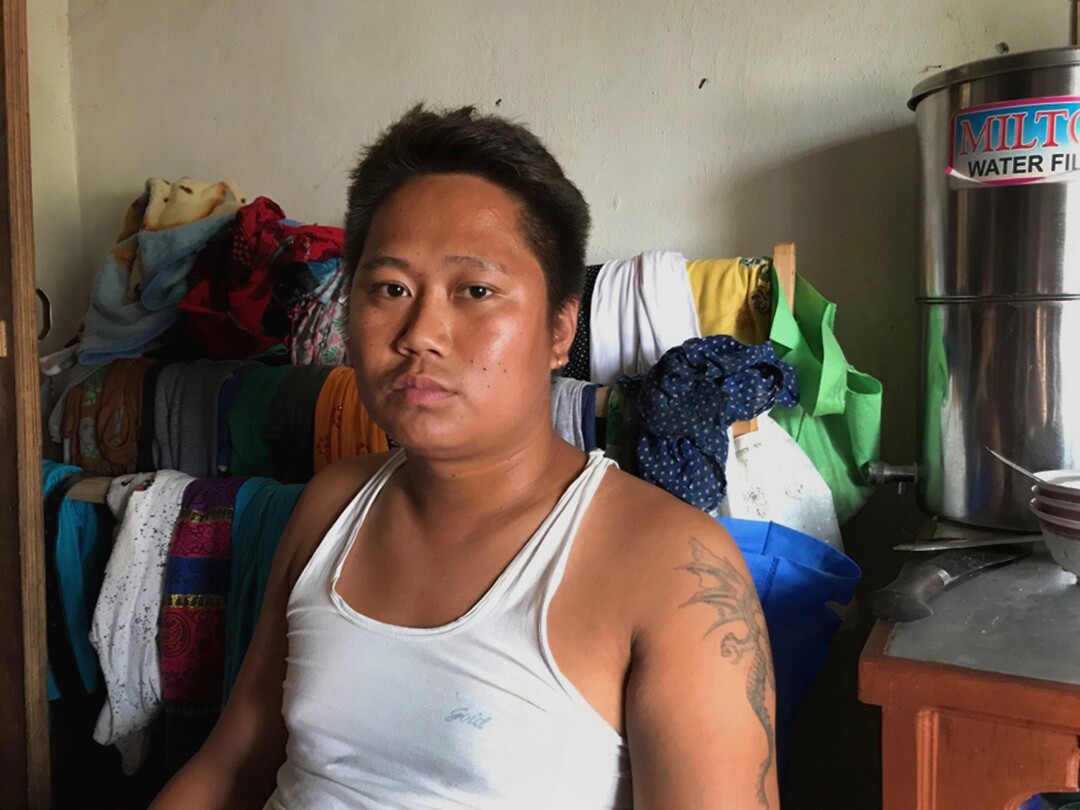
Many workers never come home.
Of the millions of Nepalis who have gone overseas for work in the last decade, roughly 7,500 have died, mostly in the Persian Gulf. More than 2,000 Nepali laborers have died in Saudi Arabia alone, roughly one every two days, according to the most recent data from Nepal’s Foreign Employment Promotion Board.
When Subash’s body finally arrived at the airport, Santoshi fainted. At first her relatives couldn’t find a truck to fit the coffin. Then someone had to go get ice.
With Nepal’s sparse web of almost impassable roads and bridges, it took days to drive the corpse halfway across the country to Laxmimarga. When Santoshi and her relatives pulled up to her small, cinder-block house, it was crowded with Buddhist monks waiting to receive the body, Santoshi recalled.
She and Subash had been able to build the four-room home with his earnings abroad and by borrowing the rest. Santoshi painted it bright pink and blue.
Subash’s death left Santoshi a widow at 26, in a country where such women are shunned, with a 9-year-old son, a 7-year-old daughter and a debt on their home that she had no idea how she’d pay off alone.
Months after the taxi crash in Jidda, in September 2015, the lone survivor woke up in King Abdulaziz Hospital with a metal plate in his head, a rod in his arm and jumbled memories.But he remembered one thing clearly: His name was Subash Tamang.
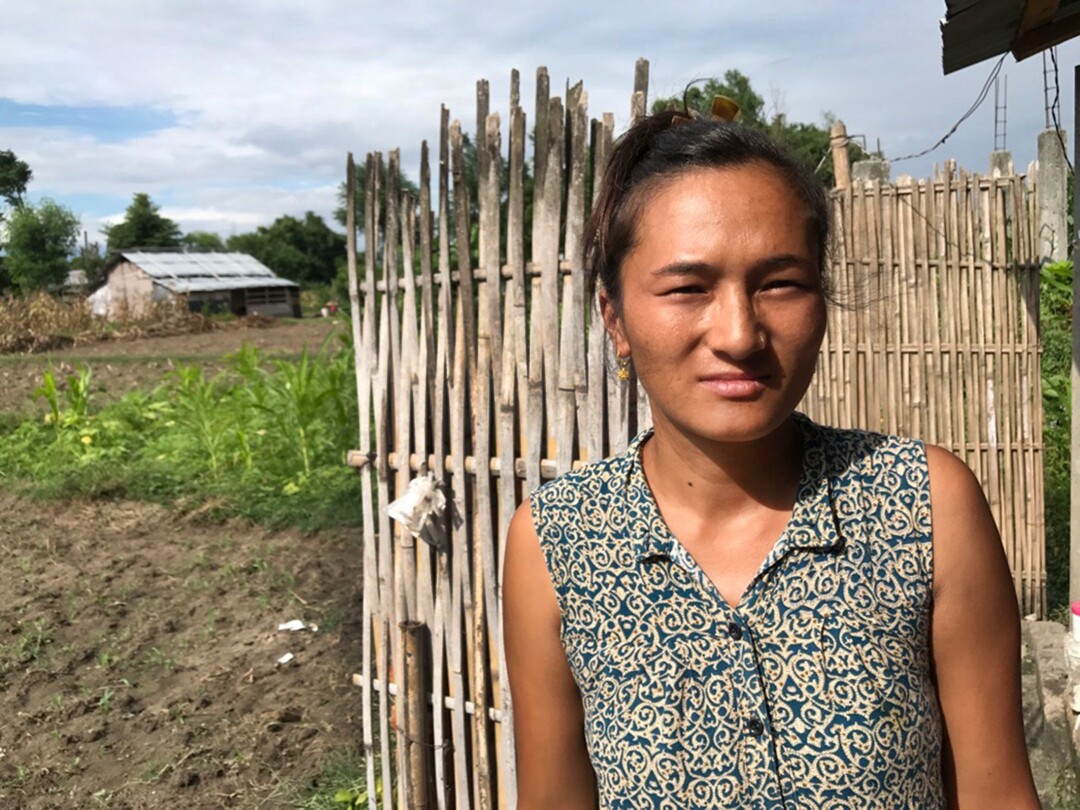
The day of the accident, Subash had eaten at Jidda’s only Nepali restaurant, tucked into a strip mall. Tejendra, the taxi driver, also frequented the spot, so often that the staff considered the driver a good friend, Anand Karki, the manager, would recount later.
After the crash, when Karki and the restaurant’s owner went to the hospital to visit Tejendra, they noticed that his signature snake tattoo was gone from his arm.
Impossible, they thought. But what if?
Knowing Subash had also been in the crash, they used the tightknit network of Nepali laborers in Jidda to track down Bhupal, Subash’s nephew, and share their suspicions.When Subash awoke, they sent Bhupal the living proof: a photo of his uncle, bleary-eyed in his hospital bed.
By then, the tragic mix-up was clear. It was Tejendra who had died the day after the crash, while Subash remained in a coma. The Hyundai manager had misidentified the body, and the company had sent Santoshi the wrong man, according to company email correspondence at the time and a recent statement to The Times. In the aftermath, Hyundai says, it met its obligations under Saudi law.
Santoshi’s relatives had pulled back the shroud a final time before the pyre, she recalled, but the body had been disfigured in the crash — and who would suspect that Hyundai and Saudi officials could make such a mistake?
Still, days passed before Bhupal told anyone back home in Laxmimarga — he was afraid of what Hyundai might do.
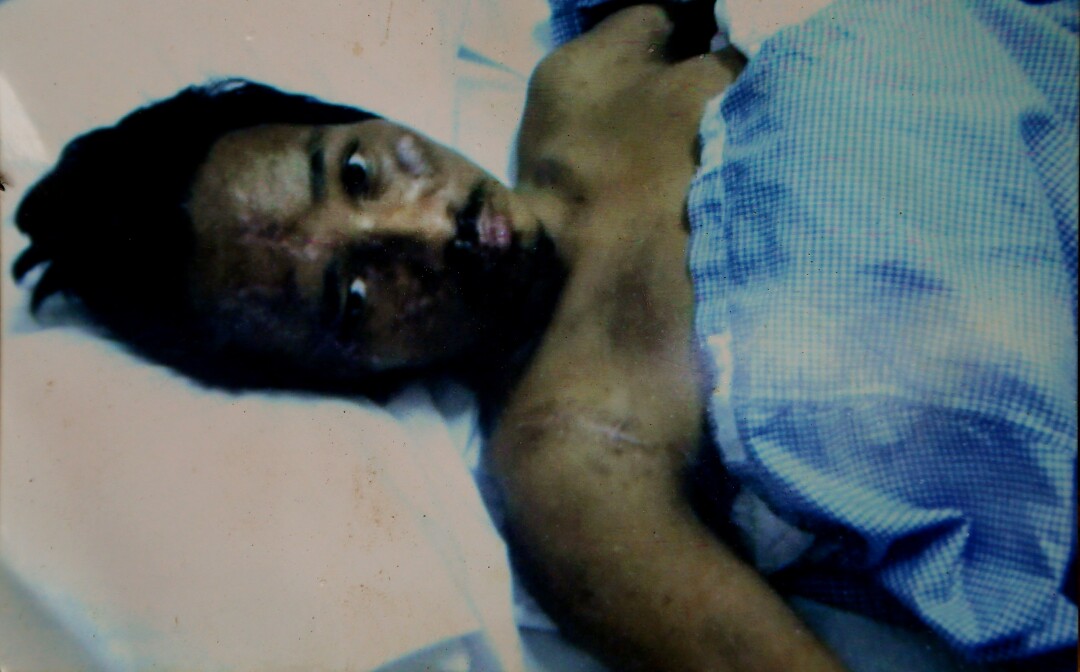
“He was already pronounced dead,” Bhupal said. “Maybe the company would ask the hospital to kill him to cover up their mistake.”
Soon after the revelation, Tejendra’s wife, who lived 400 miles from Subash’s family in the tiny village of Adhikarichaur at the edge of the Himalayas, was shown a photo posted to Facebook of the crash survivor: a man she did not know, in a hospital bed.
Later, Nepal’s consulate sent her another photo: A white cloth, pulled back, revealed a heavily scarred corpse, but Tejendra’s wife recognized her husband’s still-boyish face.
That’s when Tejendra’s family, who are Hindu, understood for the first time that he hadn’t survived the crash, they said. And in fact, he’d been cremated as someone else, in a Buddhist ceremony.
After Subash woke up, Bhupal said, Hyundai finally permitted him to visit the hospital. He called Santoshi.
When she saw Subash, alive, through the cellphone screen, she choked on her sobs.
At first, Subash didn’t remember the crash, how he’d gotten to the hospital, even what country he was in. But he recognized his wife immediately.
“Why is she crying?” he asked Bhupal.His nephew told him the truth: “Because you died.”
In late November 2015, Nepal’s consulate in Jidda informed Hyundai that Tejendra’s family wanted a formal investigation into how the company had swapped the men’s identities.
Gil Tae-Gun, a Saudi-based HR manager for Hyundai, wrote back asking Nepali officials to contact the family regarding compensation.
Hyundai Heavy Industries, a $40-billion company, ultimately offered the family about $4,000, which Tejendra’s family reluctantly accepted. Advocates at the Center for Migration and International Relations, a Kathmandu-based nonprofit, advised the family that they were unlikely to get more from Hyundai.
Nepal’s consul in Jidda wrote to Saudi officials, explaining that Hyundai mistakenly had declared Subash deceased, an error compounded by Saudi officials issuing him a death certificate. The consul requested that the Saudi government issue Subash exit papers allowing him to return to Nepal.
Instead, when the hospital released Subash in December 2015, Hyundai took him straight back to the labor camp at the Jidda power plant.
Days after, Park Byung-Ock, Hyundai general manager for the power plant project, wrote to Nepal’s consulate. He explained that Hyundai had signed a contract with the state-run Saudi Electricity Co. to take over the plant and didn’t want to hold Subash there.
“His medical condition is not that good so he should go back to Nepal and be taken cared by his family,” the manager wrote in English.
The $3.12-billion power plant is emblematic of Vision 2030, the ambitious economic redevelopment plan that’s the brainchild of Saudi Crown Prince Mohammed bin Salman. The millennial king-in-waiting, better known as MBS, said the plan would modernize Saudi Arabia by reducing its reliance on oil wealth, government subsidies and foreign laborers like Subash and Tejendra.
The story behind the story of Nepalese workers and modern indentured servitude that has haunted a Times reporter for years.
Mohammed’s visage adorns billboards and storefronts across Jidda and Riyadh, the Saudi capital, pushing Vision 2030. Other advertisements feature a futuristic evergreen skyline, an Emerald City in the Persian Gulf.
The prince has levied increasing penalties on companies employing migrant labor to compel them to hire more Saudis instead, but unemployment for citizens has remained around 12%. Under the crown prince’s initiative, the country has become more authoritarian, and Vision 2030 has fallen far short of many of its 2020 benchmarks. It’s now being scaled back.
Fahad Nazer, a spokesman for the Saudi Embassy in Washington, said in a statement to The Times that the “Saudization” program was “being implemented as planned” but added that Vision 2030 was intended to “undergo regular evaluation,” and parts of the plan “might need to be modified periodically.”
Rather than hiring more Saudis, a construction industry dominated by foreign employment and decimated by the COVID-19 pandemic and tanking oil prices is instead pushing the rising costs onto its migrant laborers, forcing them to work more for even less or, according to interviews with dozens of Nepali and other South Asian laborers in Riyadh and Jidda, nothing at all.
As for Hyundai, it exemplifies the inherent contradiction in Vision 2030. The company employs thousands of foreign workers yet remains one of the kingdom’s favorites for Vision 2030 efforts.
After he was released from the hospital, Subash’s confinement at the labor camp accounted for roughly half of his three-year employment with Hyundai.
It was almost impossible to send Mr. Subash Tamang to his home.
HA JEONG-SU, CORPORATE AFFAIRS OFFICER FOR HYUNDAI HEAVY INDUSTRIES
Another of Subash’s nephews in Saudi Arabia, a jovial long-haul trucker named Bhawindra Tamang, said he saw Subash once during that period. They spoke through the power plant’s barbed-wire-topped fence.
The only times Subash was allowed to leave the camp, he said, were when Hyundai officials took him to meetings with company lawyers and Saudi authorities that no one interpreted for him as they tried to bureaucratically “un-dead” him, get him an exit visa and rid themselves of responsibility for the injured Nepali. Subash said that when he asked why he couldn’t go home, or even leave the plant site, all Hyundai would tell him was: “If Saudi authorities got a hold of me, the company would get in trouble, and I would get in trouble, and there would be no way I could get my proper papers in place so I could leave.”
Ha Jeong-su, a Seoul-based corporate affairs officer for Hyundai Heavy Industries, told The Times that Hyundai “tried to correct” the situation, but with all the Saudi government records saying Subash was “dead and sent home,” the company got “totally stuck into the system.”
In May 2016, a Saudi Interior Ministry public security official wrote to the director of the King Abdulaziz Hospital, according to a letter provided by Hyundai, asking that a death certificate issued in Subash’s name “by mistake” be corrected to Tejendra’s because Subash was “still alive.” (It was not corrected.) In late 2016, Hyundai elevated the issue to the crown prince, Mohammed’s predecessor, “to get his special order to resolve this case,” Ha said, but there was no response.

“It was almost impossible to send Mr. Subash Tamang to his home,” Ha said.
The Saudi government ordered its own investigation into how Subash’s and Tejendra’s identities were swapped and concluded that it was human error, rather than a cover-up, according to Revati Raman Paudel, the acting Nepali consul general in Jidda. Hyundai’s hold on Subash for months afterward was a simple bureaucratic impasse, Paudel added. His detention was overlooked, because “the more powerful, the more mighty, are given more attention.”
In May 2017, during a rare amnesty period that the Saudi government offered to alleged violators of the kingdom’s residency and labor laws, Hyundai officials took Subash to a police station, where he saw hundreds of other migrant workers.
Company representatives told him he’d be on a plane home in two days, nearly two years after Hyundai and Saudi officials declared him dead.
Life just started here. I still feel like my body is not strong enough, like even now, my body is being pushed down by a 200-pound weight. … I really can’t explain it.
SUBASH TAMANG
A few weeks after his return to Nepal, Subash sat on the porch of his cinder-block house, holding his death certificate from Saudi Arabia.
The sun emerged from the afternoon’s monsoon rain and lit the scars covering the right side of his face. Suddenly, he started laughing and crying at the same time, hitting himself in the forehead over and over — a tic that has persisted since the crash.

When Subash got back to Laxmimarga, Buddhist leaders prevented him from reuniting immediately with his wife, Santoshi, and two children. They said he first had to be reborn and remarried.
In photos of a rebirthing ceremony, a shirtless Subash emerges from a large basket, typically used for hauling the harvest, which represents the womb.
In another shot, he and Santoshi sit side by side during their second marriage ceremony, dressed in bright satin scarves and ornate caps. Santoshi leans toward Subash, smiling slightly, but other hands hold her back, as if to keep them from touching.
During the rites, the monks gave Subash a new identity. Asked what her father is called, Sabita, their mischievous daughter, now 12, answered matter-of-factly, “Rinchen — that’s his new name.”
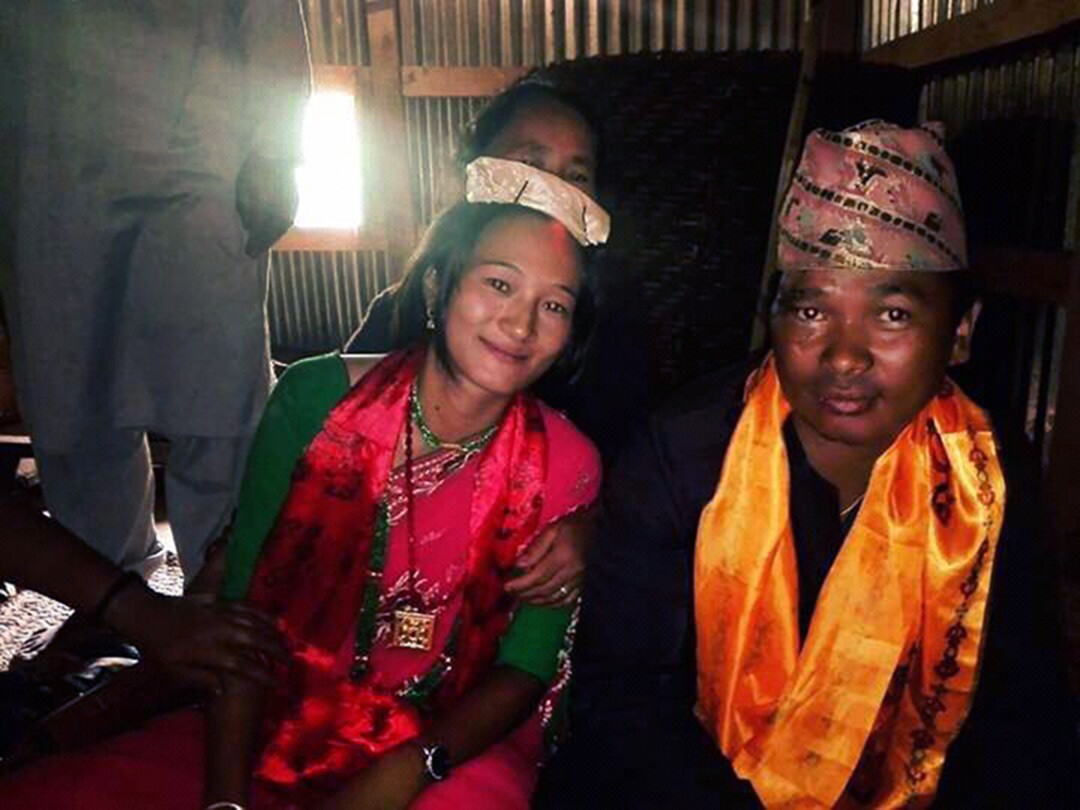
No one uses it; he’s still Subash. But he’s not the same.
“Life just started here,” Subash told me. “I still feel like my body is not strong enough, like even now, my body is being pushed down by a 200-pound weight. … I really can’t explain it.”
Santoshi looked on, slender arms folded, a spray of girlish freckles across her nose.
She has a simple explanation for what happened to Subash and Tejendra and the fallout for two families bound together by the absurd consequences of Saudi Arabia’s deeply ingrained system of indentured labor: No one is technically bought or sold, but to her, it felt like “slavery.”
A few weeks later, in the misty Himalayan foothills of central Nepal, Tejendra’s family crouched around an iPhone image of Subash, Santoshi and their two kids, sitting on their porch.
“I am glad they got him back,” Tejendra’s sister, Him Kumari Bhandari, said of Subash’s family. “But we have lost everything.”
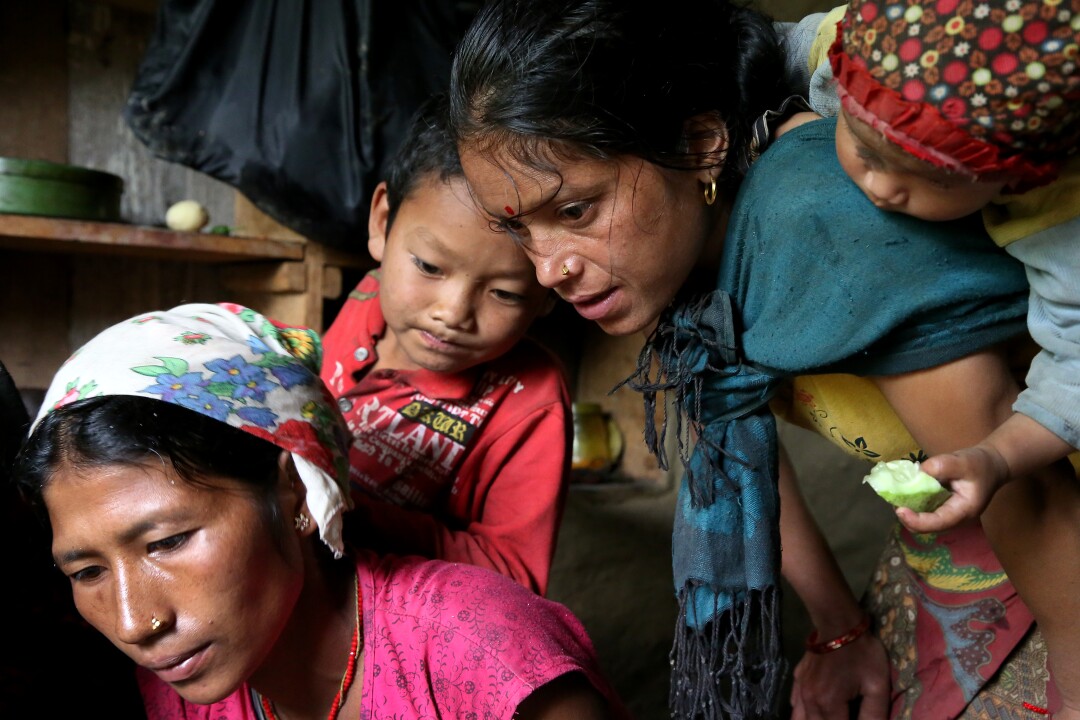
A dozen of Tejendra’s relatives live in one dirt-floored home in Adhikarichaur. The village is practically inaccessible during the monsoon, save for yellow Hyundai backhoes clearing landslides from cliff-clinging roads. Not that the roads are of any use to them, said Him Kumari, Tejendra’s only sibling.
“It’s just for the ones who have money to go anywhere,” she said.
The family said they still owed more than $4,000 to cover the debts Tejendra took on to go to Saudi Arabia, as well as the cost of the closest thing to a funeral they could give him, without his remains. Tejendra’s widow had left the village, taking their daughter with her, and had not been heard from since.
Because Tejendra’s labor permit expired just weeks before the crash, and because Saudi officials have yet to formally acknowledge his death with a death certificate, his family has not only missed the window to qualify for compensation from the Nepali government but also cannot file an appeal.
Everybody’s son goes abroad and sends money back — neither my son came back, nor his money. I could not even see his dead body.
SUBITRA, 74, MOTHER OF TEJENDRA BHANDARI
Instead, it was Santoshi who received about $8,000 from the government after burning Tejendra’s body. She promptly spent the money paying off the debt on her cinder-block house. Nepal’s Foreign Employment Promotion Board, which handles the payouts, says the government won’t ask for the money back.
To this day, the agency’s records still show Subash as the one who’s dead.
In Adhikarichaur, Tejendra’s mother, Subitra, now 74, took a cigarette from the folds of her sari and looked away from the photo of Subash’s family.
“Everybody’s son goes abroad and sends money back — neither my son came back, nor his money,” she said, tears falling. “I could not even see his dead body.”
Four months after visiting the families in Nepal, I traveled to Saudi Arabia. Over a week in late 2017, Hyundai, Saudi Electricity Co. and Saudi royal court representatives declined my repeated requests for interviews or a visit to the power plant in Jidda.
In Jidda, Ko Yeon-Joo, deputy manager of Hyundai’s administration department at the plant, also said I couldn’t visit Hyundai Heavy Industries’ office. “Our Jidda office is no more functional,” he said in an email.
Ko’s message arrived shortly after I visited what turned out to be a fully functioning office in Jidda, having interviewed Brince Ali Azlan, Hyundai’s head of human resources there.
Azlan said that even though Hyundai had not sanctioned Subash’s leave of the labor camp the day of the crash, the company had exceeded its obligations by paying Subash’s hospital bill and salary in full. Tejendra, he pointed out, was not a Hyundai employee and had been driving on a recently expired labor permit.
Subash was held at the camp for his own safety, given his spotty memory, Azlan added. He blamed Saudi authorities for dragging their feet on issuing him an exit visa.
Perhaps 1,000 of Hyundai’s roughly 16,000 employees in Jidda are Saudi citizens, and the rest are foreign workers, said Azlan, who is Pakistani. The company prefers Nepalis, Indians and Filipinos, he said, because “any kind of job, any kind of salary, they will accept, no problem.”
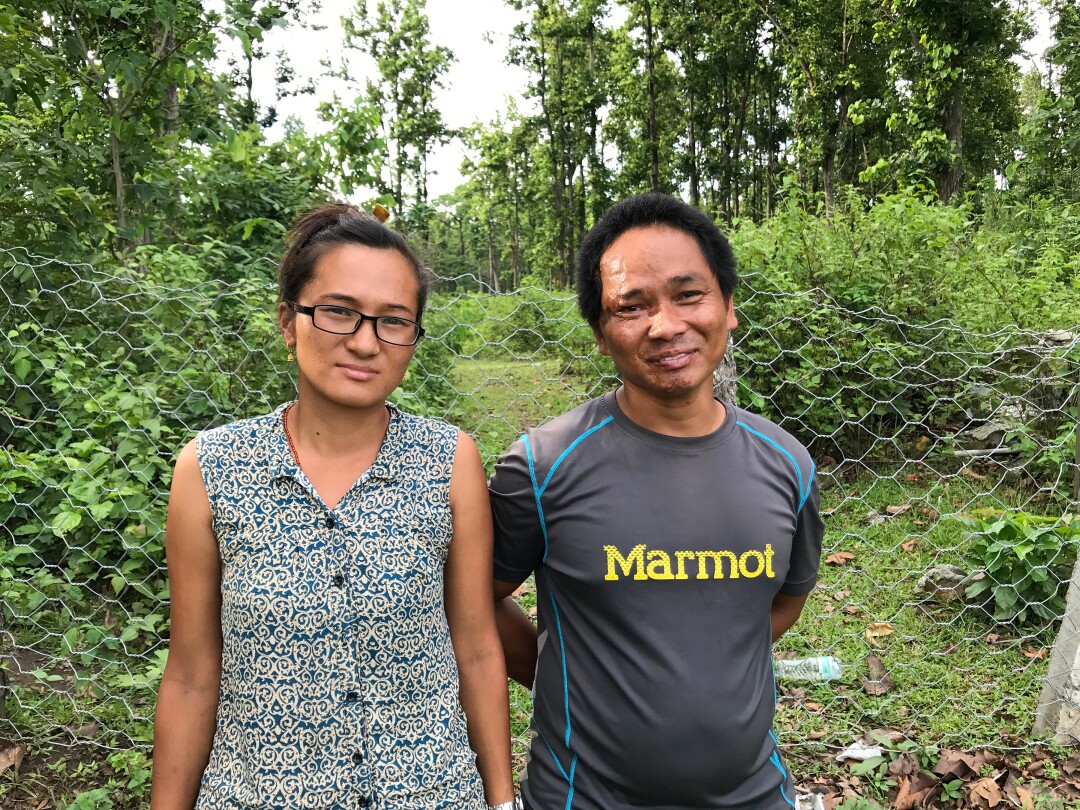
“Many companies don’t like Saudis because they’re not working properly,” Azlan added. “The office starts at 8, they come in at 11 o’clock, spend half an hour, then leave.”
Ha, the Hyundai Heavy Industries spokesman, pushed back on Azlan’s assessment, saying some of those foreign workers “belonged to the different subcontractors” — in other words, they didn’t count against Hyundai’s total.
As for Subash and Tejendra’s case, Hyundai was “shocked” when the families discovered the swap and “rushed” to find the “glitch,” Ha said. He blamed Saudi first responders at the crash site and claimed Bhupal hadn’t stepped forward until later, but he acknowledged that the official misidentification was made by the Hyundai representative at the hospital.
For its part, Saudi Arabia has undertaken reforms in recent years to better protect foreign workers, from prohibiting confiscation of passports to penalizing withholding of wages. New Saudi labor laws carry fines up to $260,000 and prison terms up to 15 years. But according to interviews with dozens of South Asian laborers across the country, employers routinely ignore those laws without consequence.
And while other gulf countries have recently ended their kafala systems, Saudi Arabia has been slow to address it.
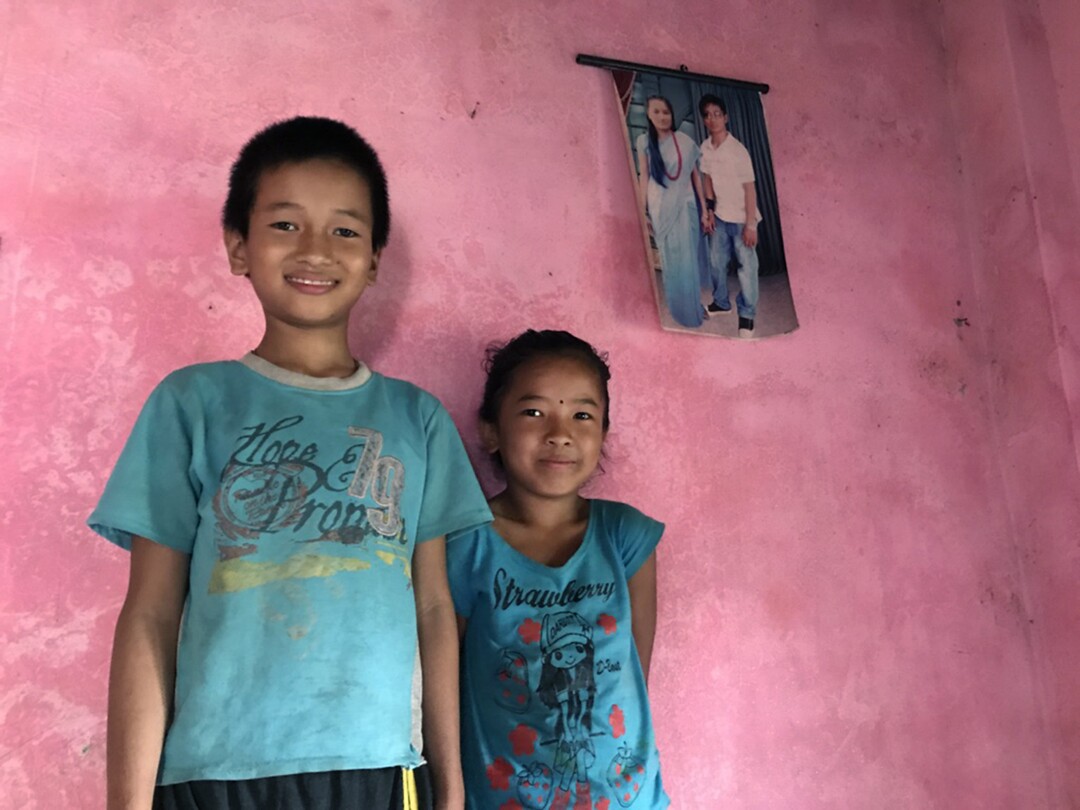
“Enforcing labor protection laws is an important element of the kingdom’s economic reforms,” said Nazer, the embassy spokesman. He added, “The kafala system is undergoing evaluation.”
Back in Kathmandu, I visited the headquarters of Nepal’s largest labor contractor, SOS Manpower Service, the agency that sent Subash and Bhupal to Hyundai.
Loka Pani Agnihotry, SOS Manpower’s chief executive officer, argued that stricter enforcement of worker protections will collapse the booming labor export industry on which both Nepal and Saudi Arabia depend.
“If there are no migrant workers in Saudi Arabia, even in Qatar or Dubai,” Agnihotry warned, “it will be like a museum.”
Outside Laxmimarga, Subash and Santoshi brought me to the woods for the first time since she burned Tejendra’s body there. She’d returned only in her nightmares.
“His soul is maybe now wandering in some other place,” Santoshi said with a shiver, hugging herself. “What bad happens to us because of this?”
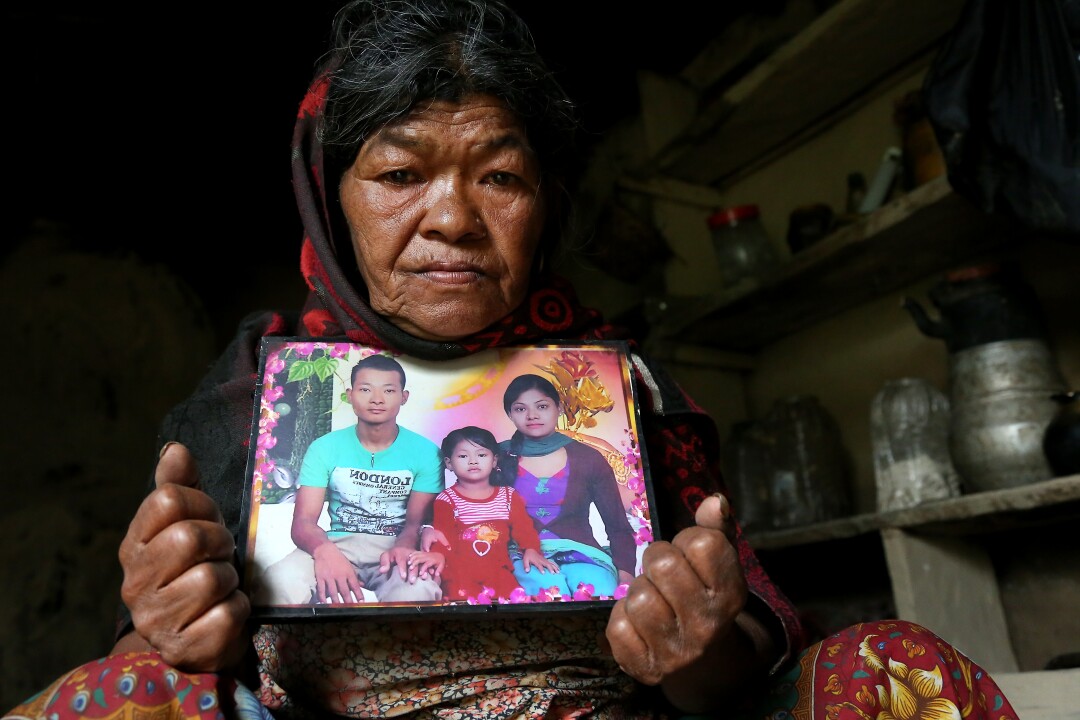
In February 2018, Tejendra’s mother, Subitra, and her son-in-law journeyed to Laxmimarga. Subitra had told Santoshi that Tejendra had complained to her in a dream that he was not properly put to rest.
Santoshi and Subash led them into the woods, to the riverbank. Subitra gathered mud where her son’s ashes had fallen and recited Hindu prayers.
Six months after Subitra’s visit — and nearly three years after haggling over the compensation — Hyundai paid Tejendra’s family: about $3,500.
To date, neither Hyundai nor Saudi authorities have admitted full responsibility to either family — one mistakenly told their loved one was dead, the other mistakenly told he was alive.
Last year, Subitra, Subash and Santoshi attended a screening in Kathmandu of a documentary made about their case, attended by several senior Nepali officials. As she gave a speech, Subitra, crying, asked the officials how she was supposed to take care of herself with the family’s earner gone.
But she blamed everything on Santoshi and Subash: not being able to see her son one last time, burning his body, taking money from the government she believed belonged to her.
“You killed my son,” Subitra told Subash over and over at the event. “You shot him in the back.”

Santoshi says she understands Subitra is still struggling to cope with the loss of her son. That was the last time they spoke.
Both families fear their futures are cursed because of Hyundai’s mistake and Saudi Arabia’s indifference.
Subitra has gone blind in one eye and is going deaf but insists on living alone. Shortly after the documentary screening, a little over $2,500 was sent to Subitra, according to her daughter Him Kumari. They’re not sure where it came from. Still, Subitra had to sell most of the family’s land to satisfy moneylenders; all that’s left in her name is a small patch of cornfield.
Santoshi and Subash borrowed a bit of money to buy him an electric rickshaw to work as a taxi, but they can’t afford the upkeep because he keeps crashing it, she said. They took on more debt when Santoshi needed emergency surgery. Then they leveraged their cinder-block home to start a small eatery. Business was barely holding on before COVID-19 emerged in Nepal, dragging the families deeper into debt.
With Subash’s lingering disabilities leaving him mostly unable to work, Santoshi has thought about going abroad herself, but he tells her: “If you’re going to leave me here, you might as well just shoot me.”
Now, they’re surviving on one meal a day since they ran out of government-rationed rice amid the lockdown. Santoshi worries that soon, they might lose the house, and their son Saurab, still a shy boy at 14, may have to drop out of school and go work abroad, too. “It seems like he’s our only way out,” she said.
“We had dreams of more, but those dreams have been shattered. Poor people like us, we can’t really dream so much.”
For more, see Behind the story: From Nepal to Saudi Arabia, reporting how a dead man came back to life.
Special correspondents Bhrikuti Rai, Nikita Tripathi and Meena Bhatta in Nepal contributed to this report. Times video journalists Nani Sahra Walker and Claire Collins in Los Angeles and staff writer Don Lee in Washington also contributed.

